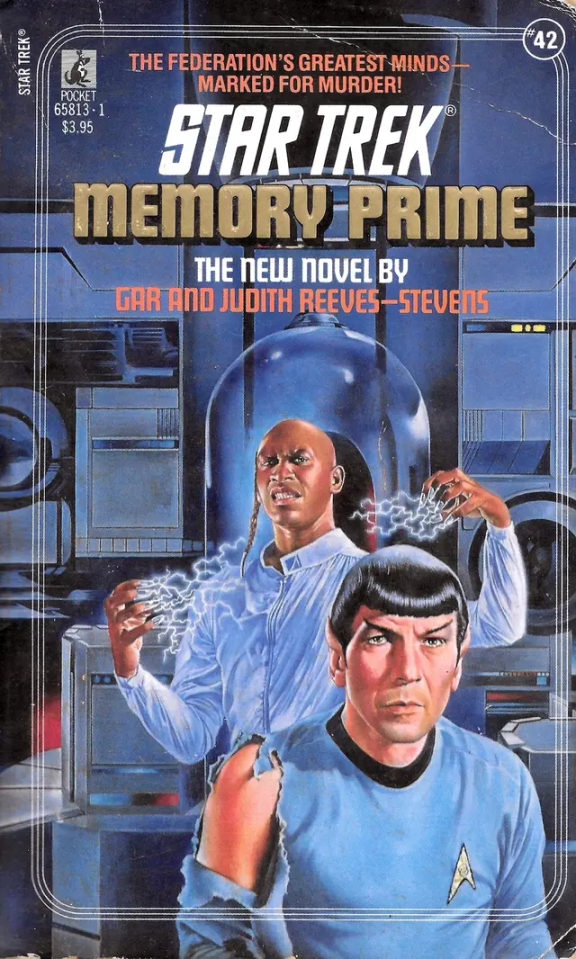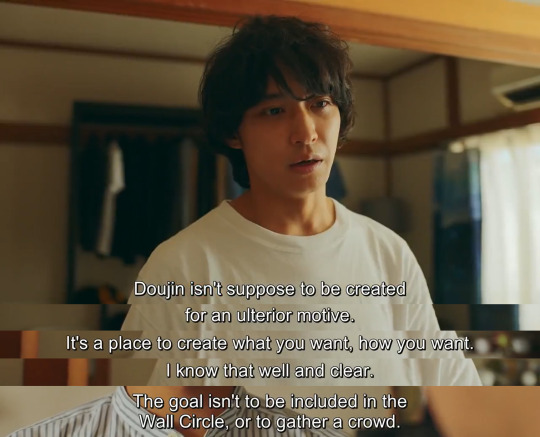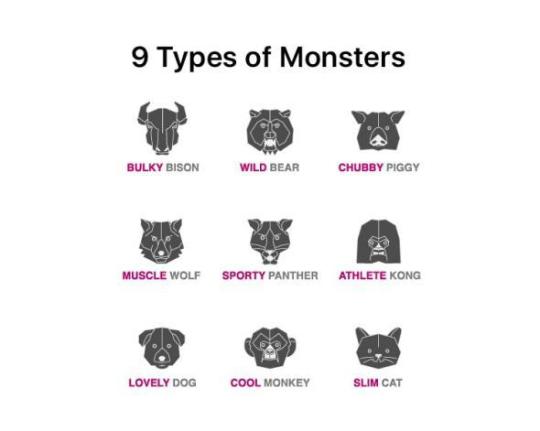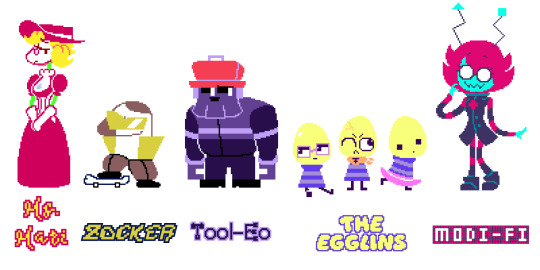#Role of AI in web development
Explore tagged Tumblr posts
Text
https://www.alignminds.com/revolutionizing-ai-conversations-crafting-user friendly chatbots to read more -/https://www.alignminds.com/revolutionizing-ai-conversations-crafting-user-friendly-chatbots/
#ai in web development#europe#india#role of ai in web development#web development company in kochi#us
0 notes
Text
Dive into the world where human intuition seamlessly integrates with AI brilliance in web development. Elevate your online presence with the perfect fusion of creativity and technology.
#Benefits of incorporating human touch in AI-driven web development#Enhancing user experience through human-centered AI web development#Balancing automation and human input in modern web development#The role of empathy in AI-driven web design and development#Strategies for infusing creativity into AI-powered web development#Understanding user behavior for personalized AI web development#Building trust through human-like interactions in AI web development#Improving accessibility with human-centric AI web design#Ethical considerations in integrating human touch with AI in web development#Tailoring AI algorithms for diverse user experiences in web development
5 notes
·
View notes
Text
PureCode company | Using ARIA Roles and Attributes
ARIA roles and attributes, on the other hand, provide additional semantic meaning to content. They are particularly useful for interactive or dynamic content that native HTML cannot adequately represent
#ARIA Roles and Attributes#purecode company#purecode#purecode software reviews#purecode ai reviews#purecode ai company reviews#purecode reviews#web development#typescript
0 notes
Text
looking at tech job listings rn like
Senior Lead Staff Engineer
Lead AI Developer
Principal AI Engineer
Turbo Ultra AI Programmer
Lead Fucko Who Can Just Tell The Money Machine To Make Me Rich (senior-level role)
Uber-Elite Engineering Team Lead
Developer With Thirty Years Experience In A Stack That Has Only Existed For Four Years
Entry Level Position That We’re Not Actually Hiring For, We Just Made This Listing To Look Like Our Company Is Growing
Florp Gulper
Mid-Level Web Developer (1392 applications received)
37 notes
·
View notes
Text
In the near future one hacker may be able to unleash 20 zero-day attacks on different systems across the world all at once. Polymorphic malware could rampage across a codebase, using a bespoke generative AI system to rewrite itself as it learns and adapts. Armies of script kiddies could use purpose-built LLMs to unleash a torrent of malicious code at the push of a button.
Case in point: as of this writing, an AI system is sitting at the top of several leaderboards on HackerOne—an enterprise bug bounty system. The AI is XBOW, a system aimed at whitehat pentesters that “autonomously finds and exploits vulnerabilities in 75 percent of web benchmarks,” according to the company’s website.
AI-assisted hackers are a major fear in the cybersecurity industry, even if their potential hasn’t quite been realized yet. “I compare it to being on an emergency landing on an aircraft where it’s like ‘brace, brace, brace’ but we still have yet to impact anything,” Hayden Smith, the cofounder of security company Hunted Labs, tells WIRED. “We’re still waiting to have that mass event.”
Generative AI has made it easier for anyone to code. The LLMs improve every day, new models spit out more efficient code, and companies like Microsoft say they’re using AI agents to help write their codebase. Anyone can spit out a Python script using ChatGPT now, and vibe coding—asking an AI to write code for you, even if you don’t have much of an idea how to do it yourself—is popular; but there’s also vibe hacking.
“We’re going to see vibe hacking. And people without previous knowledge or deep knowledge will be able to tell AI what it wants to create and be able to go ahead and get that problem solved,” Katie Moussouris, the founder and CEO of Luta Security, tells WIRED.
Vibe hacking frontends have existed since 2023. Back then, a purpose-built LLM for generating malicious code called WormGPT spread on Discord groups, Telegram servers, and darknet forums. When security professionals and the media discovered it, its creators pulled the plug.
WormGPT faded away, but other services that billed themselves as blackhat LLMs, like FraudGPT, replaced it. But WormGPT’s successors had problems. As security firm Abnormal AI notes, many of these apps may have just been jailbroken versions of ChatGPT with some extra code to make them appear as if they were a stand-alone product.
Better then, if you’re a bad actor, to just go to the source. ChatGPT, Gemini, and Claude are easily jailbroken. Most LLMs have guard rails that prevent them from generating malicious code, but there are whole communities online dedicated to bypassing those guardrails. Anthropic even offers a bug bounty to people who discover new ones in Claude.
“It’s very important to us that we develop our models safely,” an OpenAI spokesperson tells WIRED. “We take steps to reduce the risk of malicious use, and we’re continually improving safeguards to make our models more robust against exploits like jailbreaks. For example, you can read our research and approach to jailbreaks in the GPT-4.5 system card, or in the OpenAI o3 and o4-mini system card.”
Google did not respond to a request for comment.
In 2023, security researchers at Trend Micro got ChatGPT to generate malicious code by prompting it into the role of a security researcher and pentester. ChatGPT would then happily generate PowerShell scripts based on databases of malicious code.
“You can use it to create malware,” Moussouris says. “The easiest way to get around those safeguards put in place by the makers of the AI models is to say that you’re competing in a capture-the-flag exercise, and it will happily generate malicious code for you.”
Unsophisticated actors like script kiddies are an age-old problem in the world of cybersecurity, and AI may well amplify their profile. “It lowers the barrier to entry to cybercrime,” Hayley Benedict, a Cyber Intelligence Analyst at RANE, tells WIRED.
But, she says, the real threat may come from established hacking groups who will use AI to further enhance their already fearsome abilities.
“It’s the hackers that already have the capabilities and already have these operations,” she says. “It’s being able to drastically scale up these cybercriminal operations, and they can create the malicious code a lot faster.”
Moussouris agrees. “The acceleration is what is going to make it extremely difficult to control,” she says.
Hunted Labs’ Smith also says that the real threat of AI-generated code is in the hands of someone who already knows the code in and out who uses it to scale up an attack. “When you’re working with someone who has deep experience and you combine that with, ‘Hey, I can do things a lot faster that otherwise would have taken me a couple days or three days, and now it takes me 30 minutes.’ That's a really interesting and dynamic part of the situation,” he says.
According to Smith, an experienced hacker could design a system that defeats multiple security protections and learns as it goes. The malicious bit of code would rewrite its malicious payload as it learns on the fly. “That would be completely insane and difficult to triage,” he says.
Smith imagines a world where 20 zero-day events all happen at the same time. “That makes it a little bit more scary,” he says.
Moussouris says that the tools to make that kind of attack a reality exist now. “They are good enough in the hands of a good enough operator,” she says, but AI is not quite good enough yet for an inexperienced hacker to operate hands-off.
“We’re not quite there in terms of AI being able to fully take over the function of a human in offensive security,” she says.
The primal fear that chatbot code sparks is that anyone will be able to do it, but the reality is that a sophisticated actor with deep knowledge of existing code is much more frightening. XBOW may be the closest thing to an autonomous “AI hacker” that exists in the wild, and it’s the creation of a team of more than 20 skilled people whose previous work experience includes GitHub, Microsoft, and a half a dozen assorted security companies.
It also points to another truth. “The best defense against a bad guy with AI is a good guy with AI,” Benedict says.
For Moussouris, the use of AI by both blackhats and whitehats is just the next evolution of a cybersecurity arms race she’s watched unfold over 30 years. “It went from: ‘I’m going to perform this hack manually or create my own custom exploit,’ to, ‘I’m going to create a tool that anyone can run and perform some of these checks automatically,’” she says.
“AI is just another tool in the toolbox, and those who do know how to steer it appropriately now are going to be the ones that make those vibey frontends that anyone could use.”
9 notes
·
View notes
Text
Non-Red vs Blue fans guess the fake fact: results!
Find the og post here
Alright time to finally review the results! Correct answer is at the bottom of this post for those not interested in all of the results and explanations!

So the most highly voted option at 23% was Elijah Wood which I’m sorry to say is incorrect! Elijah Wood was a voice actor in the series. He played the role of Sigma! What this big name actor is doing in a random web series I have no idea but it’s still one of the wildest things to me.

Now the aspirin overdose comes in with 17.3% and got mentioned a lot in the notes and it is also incorrect. However I will admit to some poor wording on my part because it was actually an allergic reaction not an overdose. That’s a genuine oopsies on my part 😅

Florida sinking into the ocean gets a 10.1% and is also incorrect! The state of Florida does in fact sink into the ocean and it’s implied this was to cover up the disappearance of Agent Florida (who is also the guy who dies from the aspirin)

The gay guy, who’s name is Donut btw, becoming Jesus comes in with 8.3% and is in fact very real. He even walks on water. It was wild and tbh I barely remember it cause it’s from a season I dislike but it was too wild not to include.

With 7.2% I can say for sure that the giant killer robot is indeed dressed up in cute hats! Specifically a sombrero! Also the robots name is Freckles.

CPR for a bullet wound in the head gets 6.7% and is in fact considered effective medical care. Now I will say this later gets retconned and it turns out the guy didn’t actually get shot in the head the bullet just grazed him and his armor locked up making them all think he was dying- hence the choice of word being considered. The characters fully believe it but the CPR did not actually save him cause he wasn’t even hurt to begin with.

The crazy love triangle comes in with 4.7% and is also very canon and is exactly as it’s said. There’s literally just this insane love triangle for like two seasons- honestly the only love triangle plot I ever enjoyed.

With a solid 4% I can say that there is in fact canon mpreg! Hurray? Idk man this one’s exactly as it sounds. Dude got knocked up by an alien.

In last place with 2.5% of votes is the main character dying repeatedly. This is also incorrect. First off this guy is named Church which very funny on its own. Secondly it’s actually one of the first running jokes in the series how much this dude dies. Until it’s not a joke 🫠 also a few people pointed out RvB doesn’t have a main character and while I agree I felt it was simpler just to call Church the main character for this poll since it’s designed for people who haven’t seen RvB and I would argue that the majority of the narrative centers around Church even when he’s not there.
And now for the correct answer, coming in at third place with 16.1% is Caboose is god!

Now I will fully confess to being sneaky with this one. This is actually a joke made within the series but it is not true at all. Caboose is not actually god and the platypus is just that fucked up. I knew nothing I could come up with would be able to match the absurdity of this series so I decided to twist a few words so that way everything seemed equally fucked up.
And that concludes the poll! I will now leave you off with a few honorable mentions that did not make the Final Cut:
They have a Spanish speaking robot. None of them speak Spanish.
He’s a ghost but not actually a ghost but actually a highly advanced computer program
Woman has mega beef with an AI copy of her dead mom
The highly advanced computer program can’t aim for shit
The first 5 seasons were revealed to actually be a prolonged torture session
Dude chases his dead gf through multiple iteration of the same memory
Woman developed a sibling like bond with an AI copy of her extremely neglectful father
330 notes
·
View notes
Text
"Memory Prime" review

Novel from 1988, by Garfield and Judith Reeves-Stevens. It's strange that the title says "the new novel by...", since as far as I know, this was the first Star Trek book of these authors. Chaotic, crazy, convoluted, at times campy and hard to follow, it's also a lot of fun. Even the cover is a "what-the-fuck" moment, with that Spock looking tiredly at the viewer, wearing the trademark Kirk-ripped-shirt.
The story mixes several TOS elements: a conspiracy to kill someone aboard the Enterprise; a mission to rescue Spock that puts everyone's careers in danger; and an obnoxious Commodore that hinders the heroes' efforts. All mixed and enhanced to cinematic level. Apart from all that, the novel expands on the story from "The Lights of Zetar", showing the aftermath of Memory Alpha's destruction. And has Mira Romaine (the guest from that episode) as one of the main characters.
The titular Memory Prime is the new center of knowledge and research for the Federation, and the main node in a network of similar centers, each in a different asteroid. Selected as the place to hold the Nobel prizes, the Enterprise is tasked with bringing scientists from all over the Federation to the ceremony. But things get awry when Starfleet intelligence discovers that one or more of the scientists are targeted for assassination. And to everybody's surprise, the main suspect is... Spock!! On top of that, Starfleet has lost confidence in Kirk, and orders a Commodore to take over the Enterprise during the emergency. So Kirk now has to recover both his First Officer and his ship, while confronted with a thickening web of conspiracy. There's something of pulp fiction about the cackling villains, killer robots, and constant plot twists and cliffhangers. But surprisingly, there's also an element of more serious science fiction, with the introduction of the Pathfinders (artificial intelligences that have developed their own worldview), and the discussions about computer science. The chapters dealing with the Pathfinders show a fascinating and alien perspective, that may very well be classified as "cyberpunk". It's possible that something of this owes more to TNG than TOS. The final reveal about who was behind the assassination, the real target of it, and the motives, were actually unexpected.
As for the characters, Kirk gets the spotlight and most heroic deeds (so it's no wonder that these same authors got to co-write the Shatnerverse novels later). And of course Spock is central to the plot, though absent during a good chunk of the story. But Scotty also gets a larger-than-usual role, and picks up his romance with Romaine. While Uhura has one of her most badass moments when confronting the Commodore. Also, everyone has crazy, crazy fight scenes: from Kirk defeating a robot with bullfighter techniques (and utterly annihilating his shirt in the process), to Spock locking in a mind-meld combat, or McCoy... attacking with hypos.
In summary, a pretty exciting action adventure, with humorous scenes that are actually funny, and some food-for-thought concerning AI and the fainting distinction between human and machine. Even if the plot can get messy and even ridiculous at times.
Spirk Meter: 9/10*. Kirk is really distressed by Spock's framing and incarceration, and spends most of the novel focused on rescuing him no matter what. Even if this means the end of his career and losing the Enterprise; Spock comes as his first priority. He doesn't doubt his innocence for a moment, either, while others in the crew have some reservations. And whenever Spock's in physical danger, Kirk is the first to jump to protect him (even if he himself is a wreck). Kirk is also the only one who truly seems to understand Spock, he can anticipate his thoughts and see his logic, where others only see crazyness. Besides, there's a scene where Kirk faints, and the first thing he says upon waking up is "Spock, Spock...?". And yeah, Spock is there, hovering over him and pushing him gently to lie back in bed.
Though this is clearly a spirky novel and McCoy has a lesser role, there are a few moments with him too. At the beginning, both he and Kirk devise a convoluted plan to keep Spock in the dark about the Nobel ceremony, in the hopes of seeing him smile or at least react when the surprise is revealed. While at the end, McCoy wants to know EVERYTHING about Spock's years in the Academy, once he learns from one of his teachers that he was a bit of a "class clown" back then (for Vulcan standards). And despite Spock's apparent annoyance, Kirk notices a warm expression on him, because of the doctor's antics. Kirk also jumps in front of McCoy and Spock to take a lethal phaser shot instead of them. With the hilarious result that the shot wasn't neither that lethal, nor he took it all that well, considering both Spock and McCoy also end up groaning in bed after a stun.
*A 10 in this scale is the most obvious spirk moments in TOS. Think of the back massage, "You make me believe in miracles", or "Amok Time" for example.
37 notes
·
View notes
Text
BL doujin & Men Who Make Some of Them
If BL is stories of androphilic men by androphilic women, then what’s the opposite of that? It would probably be stories of androphilic women by androphilic men.
The latter is what Minamoto Kazuki mainly dabbles in.

Apart from straight & BL manga, he also authored Shoujo Manga Artist Minamoto-San Comes Out. Yeah, that’s the title. It is autobiographical if that wasn’t obvious. Arguably, his most famous manga, at least in BL fandom, is Wall Circle's Doujin Artist Nekoyashiki-Kun's Desire for Recognition Grows which got live-action adaptation: KabeKoji in 2022.
Androphilic male characters who create straight content is not rare in BL. In 2023, from what I can recall, we got two such characters: Sung Woo Jae from Individual Circumstances (2023) and Yoh from Taikan Yoho (2023). Jinta from Cherry Magic (2023) also writes (presumably straight) romance. Even before that, we got an entire BL live-action franchise (starting with The Novelist (2018)).
Doujin production and consumption
Doujinshi (doujin for short) is self-published works. It includes both derivative works (fan works) as well as original works. It is estimated that nearly half of the doujin produced and circulated are BL. These are traditionally sold at conventions like Comiket. These days doujin are sold online, for example through dedicated websites like DL site.
Doujinshi culture and Comiket especially has been instrumental in the development of BL as a genre. Unfortunately, unlike other BL pioneers such as Mari Mori (her 1961 novel A Lovers' Forest is considered the first BL) and the Year 24 Group, Meikyu doujin circle (Yoshihiro Yonezawa in particular) seldom find mention in history of BL.
BL doujin grew side by side with commercially published works. The original use of the portmanteau yaoi (no peak, no fall, no meaning) was an indication of plot what plot nature of those doujins that subverted the East Asian narrative structure to focuse exclusively on erotic relations. Doujin BL varied widely in themes and approaches, even more than commercial BL as doujin are not created to appeal to the masses, instead cater to super-specific fandoms. Also, it is easier to debut into doujin arena than to commercial BL. However, since these are literally ‘thin books’ in most cases, there is associated limitation. There is cost of printing to be taken into account as well.
As more explicit doujin (yaoi) and less explicit BL (shonen ai, etc.) coevolved in a porous environment, BL transformed into a successful genre in itself with numerous dedicated magazines and multimedia adaptations. Moreover, doujin was good ground for experimentation and yields in that arena made its way into mainstream BL and enriched it.
Commercial BL welcomed many doujinshika into its fold. e.g. Ayano Yamane (author of the Finder series) is associated with a bunch of doujin circles at different points in time: GUN MANIA, Shouhoku Taiiku Yougushitsu and Ouka Seisaku.
BL mangaka continued producing both doujin and commercial BL. e.g. Kizu Natsuki (author of Given) is a prolific doujinshika under the name Gusari in Sashikizu circle.
BL mangaka produced doujin of their own work. e.g. Ichikawa Kei (author of Blue Sky Complex) published erotic extras as doujin.
These days, there is pixiv among others and long serialization possibilities. Authors are less constrained by space – unlike physical publication, web publication is not constrained by real estate (number of pages, chapters, etc.). Thanks to the internet, the distance between doujin and commercial BL have shortened.
A lot of gei comi (bara) is also self-published.
Doujin BL culture exists everywhere BL is famous with wide variation.
Doujin played an important role in emergence and growth of Korean BL. e.g. Totally Captivated by Yoo Ha Jin had doujin extras.
Chinese doujin culture is slightly different from that in other countries. Note-worthy is the self-publication of danmei (Chinese BL) novels. Three most recent cases against danmei authors [and their accomplices including those who helped the authors print, bind, package and sell those copies] were for self-publication.
天一(Tian Yi) for her student X teacher SM erotica 攻占 (Seize Control) - charged for self-publication and violation of law prohibiting publication of obscenity [explicit SM involving a 17-year-old student and his teacher in the novel]
深海先生 (Mr. Deep Sea) for her historical romance 锁帝翎 (aka 笼中帝 ; The Caged Emperor) - charged for self-publication.
There is a third. But the details are not available in the public domain.
It used to be a common practice for authors to self-publish uncensored versions of their web-published works, sometimes with explicit extras. These were intended for fans who wanted to collect these copies and to express their appreciation to the authors. Both self-publishing and “obscene content” are illegal in China.
Doujin, BL and their creators
Kabe Koji is the journey of a doujinshika, Mamoru Nekoyashiki, who yearns to be recognized as such and also as a beloved. While in high school, he fell in love with his childhood friend Kazama Issei whom he is sure doesn’t like him like that, thanks to rampant compulsory heterosexuality. Being gay was something he felt he had to keep under wraps not only because of fear of rejection but also because of heterosexism. Talented in drawing, he visits Comic King, a popular otaku convention where he discovers a different world – where male androphilia is celebrated in art.

This inspires him to cultivate his talent in drawing and to pursue a career in manga. Since the art he was most drawn in by was ero-manga with macho uke with bitch characteristics, that’s the style he pursues.

When we meet him, this is the subgenre that we see him focusing on. His influences are pretty obvious.
Moreover, the main character (hence the target of affection in his work) looks a bit like his crush. Issei notices this and tries to draw himself like that (with disproportionately thin neck) in little notes and letters to his Mamocchi.

[I honestly think Nakao Masaki was bit of a miscast for this role appearance-wise because in the manga Issei is more on the gacchiri (muscular) side of ikemen. Whoever thought Torii-san’s uke from Fudanshi Bartender no Tashinami (2022) would be right fit for Issei’s character. The actor clearly didn’t disappoint in any other aspect. This is like the case with casting decision in One Room Angel (2023) wherein a manga character with gachimuchi aesthetics was changed into a lean ikemen. An opportunity for a different body-type was wasted. No complains against those actors since they aren’t the ones responsible for casting.] This is an erroneous assessment. Thank you @tompetertrash for correcting me.
Nekoyashiki, while pursuing training and education in manga making, has already established himself as a fairly successful doujinshika known as Honeniku-sensei of Muscle Department Store. He belongs to the Wall Circle.
"Kabe circle" (wall circle) — a slang term for doujin groups or "circles" that are popular enough for their booths to be placed beside the wall of the convention, for ease of line management. (Source: ANN)
He is friends with Yamada, a fujoshi who is his support in creating, defending and selling doujin.
Such friendships are not too rare. For example, friendship between Yoh and Manju in Taikan Yoho (2023). And the IRL friendship between female danmei author Lan Lin and male manhuajia Liang Azha.
Yun SuAn's friend Choi is a BL manhwaga in My Damn Business (2024).
Nekoyashiki meets two other characters at Comic King: Framboise and Takkun.

Framboise is the president of a doujin circle called Bearded Beauties. He is very popular. He is not only among the wall circles each time we see him, but also is showered with gifts by his fans. He acknowledges that he has been doujinshika for years. His art resembles him – body-type, facial hair, moe. He keeps inviting Nekoyashiki warmly to a gathering of muscle BL artists despite getting turned down. His interactions with Nekoyashiki are precious.
Takkun is Nekoyashiki’s fan. He is inspired by Nekoyashiki and worked hard to establish himself as a wall circle doujinshika.

His rise from a consumer to producer of doujin and finally a wall circle doujinshika mirror's Nekoyashiki’s journey. Moreover, his rise is contrasted with Nekoyashiki’s fall.

Also, one of two characters on his doujin cover looks a lot like him.

Unlike Framboise and Takkun who draw what they like, Nekoyashiki draws to be recognized.

Nekoyashiki draws a second season to his previous work Please Suck on my Enormous, Manly Tits. Despite Yamada’s best hopes, it is not popular at all and loses Nekoyashiki his position as a wall circle doujinshika. He bids goodbye to Suck My Manly Tits series and to ero-manga sub-genre in general.
In a desperate attempt to climb back into popularity, he tries classic BL pairing. We get to see him reading commercial BL as a part of his research. This is an obvious mistake. Yamada wants to intervene but hesitates and ultimately gives up.
When his next doujin, My Perfect Boss Became My Perfect Spouse, also flops, he loses his resolve to be a mangaka.

Yamada asks Nekoyashiki to be more honest and expressive in his creation.

In the end, Nekoyashiki creates a doujin inspired by his own relationship and aspirations – a work that, Framboise and Yamada notices, is to Nekoyashiki’s satisfaction.





It is common for at least some characters by male BL and gei comi mangakas (who have revealed themselves) to look at least a little bit like themselves. To see examples, check out the beginning of Massive: Gay Erotic Manga and the Men Who Make It where representative art and artists are placed side by side. Some even acknowledge this. e.g. Chinese BL manhuajia Liang Azha once commented on how his shou (uke) tend to look like him as he is today and his gong (seme) resemble his looks from his college days. Moreover, art tend to inspire clothing, haircuts, and other features which in turn inspire art. The influence Tom of Finland had on androphilic men of his days and they on him is discussed in his 2017 biopic. Similarly, mangakas are influenced by their senpais in the field and sometimes it is noticeable in their art too. e.g. Gengoroh Tagame’s historical works looks quite a bit like those of Go Mishima.
Other BL doujinshika in Live-action BL
Yoh from Taikan Yoho (2023) creates his first BL doujin, inspired by his ikemen boyfriend and their relationship, in collaboration with his mangaka friend Manju after his career as commercial mangaka of straight ero-manga takes a nose-dive.
BL Metamorphosis (2022) depicted the process of BL doujin creation in detail as the main character, Sayama Urara, embarks on that journey. Her friends offer her support, especially Ichinoi Yuki who funds the printing and binding. Sayama Urara doesn’t debut as doujinshika as she doesn’t set up her booth at the convention. However, one of the copies lands in the hand of one of her favorite authors Komeda Yu whose commercial BL work Kimi no Koto dake Miteitai was what brought Sayama Urara and Ichinoi Yuki together.
Komeda Yu on the other hand is a doujinshika turned commercial BL mangaka. She visits the convention in hopes of overcoming writer’s block and to rediscover her passion for drawing. She is motivated by the doujin that Sayama Urara created and emerges out of slump to continue with her series.
Fudanshi Bartender no Tashinami (2022) revolves around Soichiro Hibiki, a fudanshi bartender moonlighting as a BL doujinshika, who draws inspiration from his customers and fellow bar staff to fuel his passion.
Minamoto Kazuki
While narrative drives home the point that the various pieces of art we see are works of respective doujinshika characters through haircuts and body types, the fact remains that most of those are actual doujin by Minamoto Kazuki aka MELU. He belongs to the circle: GOOD BYE LIFE.

In case anyone want to read them, here are the links:

Kumabayashi at Work Has Not Underwear Line
One Million Miles: The Complete Collection
Competition Swimming Brief in Suit Man
A Midsummer Night's Beach Story: SM Assault Works 2
Suck My Manly Tits manga: 俺の雄っぱいがでっかくなっちまうくらいちゅーちゅー吸ってくれ
俺の雄っぱいがでっかくなっちまうくらいちゅーちゅー吸ってくれ2
"Suck My Manly Tits" doujin is in its 3rd season: 俺の雄っぱいがでっかくなっちまうくらいちゅーちゅー吸ってくれ3
Autobiographical pieces that didn't figure prominently:

30年以上マンガをほとんど読んだことなかった彼氏がBL沼にハマった話 (A story about how my boyfriend, who has barely read manga for over 30 years, got addicted to BL swamp.)

J庭でちいさな夢を叶えたゲイカップルの話 : Story of a gay mangaka and his boyfriend who participated in J.GARDEN, and their little dream that came true.
The cover of this doujin got live-action adaptation in one scene that one would miss if not looking closely:

Other interesting works by Minamoto Kazuki
Autobiographical: Shōjo Mangaka no Minamoto-san ga Kaminguauto Shimasu.
2. Those with English translation:
The Midnight Association for The Broken Hearted
The salaryman who has a fetish for suit gets horny.
The Gay Who Turned Kaiju
3. Essay-manga about doujin-making
夜寝てる間にBL原稿のお手伝いをしてくれる妖精さんがいた話
BL同人原稿(アナログ18禁!!)を東京から大阪の印刷所まで届けてくれた彼氏の話
4. About Kabe Koji (2022) live-action:
自分が原作の実写ドラマの大ファンになってしまったので原作者自らヲタ活をしています。
自分が原作の実写BLドラマをリアタイしたくて大阪へ行ってきました。

___
This is dedicated to @bengiyo and @liyazaki for gifs featuring Framboise. Thank you very much. While I was trying my hand at a review for One Room Angel (2023) and wanted to express my disappointment at the lean ikemen casting for Kouki’s role, I got an opportunity to use those gifs. I really wish someone would create some gifs for SHIMBASHI TUGBOAT content too.

(Especially this scene.)
For someone who is as much a fan of “tribes” as BenZi, I would not mind playing the 9Monster live-action BL bingo version.

114 notes
·
View notes
Text
SHOPKEEPERS
Finally! All of my secret bosses' shopkeeper friends are here!
LOOK AT THEM! LOOK AT THEM NOW!
Now i'll proceed to give quick descriptions of them.

Ms. Mari: Old actress that played the role of Woostern's mother on the "Woostern & Friends" show, however both of them did develop a real mother and daughter-like relationship over time. She locked the shadow crystal on a safe after Woostern's dissapearence and keeps looking for her to this day, even though everyone else thinks that Asriel took Woostern with him when he went to college. Light World Object: Trash Flowers
Zocker (DESIGNED BY CREEPA-BOT !!): Sockling No. 45. Cool sock skater dude that taught Bonslick how to skate, and they used to do all kind of crazy stuff together. They haven't seen each other in some time after Bonslick went insane though. No real connection to the machine in the basement or anything, but he does know how to get the key. Light World Object: Sans' Lone Sock
Tool-Eo: Old technician man that helped the lightners in the creation of the Bunz-E animatronic. After that, he basically was the one who trained Bunz-E's AI. He taught him how to do some magic tricks, how to treat the guests, and who he was supposed to defend. After the incident however, he was forced to dismantle the animatronic and hide his leftover part behind a sealed wall in the basement. Light World Object: Toolbox
The Egglins: A group of rowdy egg childs that just do whatever they want. They used to play with Quiddo all the time, after all, the weird ones gotta' stick together! Until the day that Quiddo suddenly wandered off too far and dissapeared, they tried to look for them to no avail. Also, they found something weird in the trash recently, some strange looking flowers that make a bridge when you align them in the water... They don't know what to do with them. Light World Object: Eggs, they're eggs
Modi-Fi: Mad Alien Scientist that used to work for Space Emperor. She was... Really close to Shikari. They used to run tests together, it's a lot easier when the voluntary test subject is basically indestructible. The day of the incident, she was forced to retain Shikari and exile her to the Dark Webs, as well as to hide the Shifang. That day she almost got killed... it was as if Shikari didn't even recognize her... Light World Object: Mod Installing Program
So yeah, that's it, i hope you like them!
... Hmm? What about Sakriss' friend? Well... Sakriss is still a mistery. For now.
#deltarune#deltarune secret boss#deltarune oc#ms. mari#Zocker#tool-eo#the egglins#modi-fi#their proportions are a lil' FXCKED on this image...
50 notes
·
View notes
Text
‘ghidorah’s voice’ headcanon dump because its been awhile 🥀
(a lot of these are just my monsterverse and beyond headcanons since ghidorahs voice doesnt diverge that far from the monsterverse as a whole)
- As much as I joke about it, Nathan doesn’t have romantic feelings for Ren (not in this story, anyway) it’s more of an envy that he feels for Ren. Something I noticed about Nathan in GVK is someone was always on his neck making a snarky comment (Maia, Ilene, even Jia 💀) and he was dismissed as a crackpot for believing in the Hollow Earth, so while Nathan was wallowing in his sorrows after losing his brother, here comes the Monsterverse’s equivalent to Justin Hammer saying that he was right all along, and to his side is Ren, nodding along to everything he says. Ren has had no problem achieving what Nathan has spent his entire career chasing: respect, unlimited resources and funding for his projects, and from Nathan’s perspective, he handled the loss of a family member like a champ, compared to Nathan who (originally) fell into alcohol similarly to Mark. Lastly, in the deleted bar scene, Ren was the only character who didn’t make a snide remark toward Nathan throughout the film.
youtube
- It comes as no surprise that Stanton likes Rick and Morty considering his character is canonically based off Rick Sanchez, but yeah— Stanton enjoys all kinds of adult shows and I like to think he hosted the SNL sketch that featured a parody of Ren.
- Originally, I was going to have the lawyer character of Shindo be an Xilien in disguise who was tasked to keep an eye on Ren (think of Black Widow’s role in Iron Man 2) and there was going to be a scene of the two of them in the same woods Logan Paul recorded a body in to dig up a Ghidorah skull, but I didn’t want to turn the heroic Shindo from the early films into a villain, looking back, I should have just given him a different name, so maybe i’ll write a scene of this hypothetical and leave it on my blog for anyone who wishes to read.
- Controller X!Ren isn’t anywhere near as crazy as his Final Wars counterpart, his fits of maniac laughter are either him getting carried away with the moment (similarly to when he piloted Mechagodzilla and started calling himself god in the novelization) or just playing a character to scare the shit out of Monarch.
- Considering Mechagodzilla consisted of San’s remains, Ren’s brain, and an AI, that would mean Ren unfortunately doesn’t only support AI, but he modeled one.. 💀 However, I like to imagine this is what opened a lot of governments eyes about the dangers of AI and finally forced them to put restrictions on artificial intelligence.
- It’s implied in the novelization that the rampaging Mechagodzilla specifically targeted Godzilla due to Ren’s remains being nothing but his hatred for Godzilla, with that being said, Ren did briefly die in ‘Ghidorah’s Voice’ so when Ghidorah says he saved Ren’s life, he’s actually telling the truth, because while Ichi and Ni casually waltzed out of Apex in Ren’s body, Ren’s consciousness was in the mecha alongside San, so when San was defeated, he took Ren’s consciousness back to his body with him, esstientally reviving him.
- As stated in the fic itself, San saw EVERYTHING on the internet while he was bored in Mechagodzilla, he surfed the web and was probably like: “why is there so much porn of me..”
- With or without Ghidorah’s blessings, Ren would have eventually developed psychic abilities since I imagine it takes more than 5% of the human brain to pilot a literal death machine, he unintentionally learned what it was like when a human uses more than 5% of their brain. (think of the movie lucy with scarjo!) and would have gone on to master it, Ghidorah’s influence just amplified them and sped up the process.
- The real reason Bernie wanted to hear Simmons finish his speech is because he had hopes Simmons would spill the identity of GhidoraStan64, however, Simmons took it to his grave after years of holding it over Ren’s head.
- Due to someone surviving her HEAV getting crushed, Maia probably walks with noticeable injuries and has difficulties running.. It’s a wonder how she successfully kidnapped Jia and Ilene. I think this is a neat addition because that means the trio consisting of herself, Raymond Martin, and Ren are all deformed in some way.
- San and Gigan actually get along really well, it’s not uncommon for Ghidorah’s allies to fawn over San because of his personality, but San and Gigan are on another level— San often wishes he had his own body just so he could destroy planets alongside Gigan. Monster X is like their one mutual friend who introduced them and they ended up getting closer.
- On the topic of Gigan, the reason Jonah had his head was because I imagine there is Titan bidding auctions similar to JW and Jonah used the money Simmons gave him for San’s severed head in order to purchase Gigan’s severed head.. What goes around, comes around!
- San loves to ragebait Ni, he will cut Ni off mid-sentence by loudly going: “What?” Just so Ni will repeat himself only for San to cut him off again.
- If anyone has seen Squid Game, Ni is actually a lot like Nam-gyu, from resenting their superior, to being violet individuals, to picking on those weaker than him, to having an inferiority-superiority complex, Ni is one nasty individual with barely-concealed rage just beneath the surface. According to Michael Dougherty, Ni secretly wishes he was in charge, and that def applies to my take on Ni.
- Ichi is well aware of Ni’s resentment towards himself and San as well as Ni’s desire to usurp him and he often purposefully sides with San when San intentionally pushes Ni’s buttons solely to antagonize Ni and see if he’ll actually act on his desire to usurp Ichi. (spoiler: he never does, not in the main GV universe, anyway.)
- According to an interview with Demian Bichir, Maia’s mother fell in love with Walter due to his oddly impressive pianist skills, so I imagine Walter wasn’t always wealthy and somehow got stupidly rich by dumb luck. I don’t think we’ll ever meet Mrs. Simmons, so it’s safe to assume Walter pulled a Trump and has her body in some unmarked grave. Does Maia give a shit? Probably not.
- Lastly, any actors who have played a role in the Monsterverse I imagine simply don’t exist as themselves.. This is mostly because of Thomas Middleditch (Sam Coleman’s) real life sexual misconduct allegations and forcing ex his wife into an open relationship, but it’s also for the sake of neatness.
#fanfic#ghidorahs voice#king ghidorah#ren serizawa#gigan#ichi#ni#san#controller x!ren#walter simmons#nathan lind#maia simmons#Youtube
8 notes
·
View notes
Text
https://www.alignminds.com/5-web-app-development-trends-for-2024-2/
#AI in web development#Role of AI in web development#Web development company in Kochi#India#US#Europe
0 notes
Text
AGARTHA Aİ - DEVASA+ (2)

In today’s digital landscape, a captivating and functional website is crucial for any business looking to thrive online. Full service web design encompasses a comprehensive approach, ensuring every aspect of your site is tailored to meet your unique needs. From the initial concept to the final launch, this service provides an array of offerings, including website service, responsive web design, and custom design services. Whether you’re a startup seeking to establish your brand or an established enterprise aiming to enhance your online presence, understanding the elements of full service web design is essential.
Full service web design
Full service web design encompasses all aspects of creating a website, from initial conceptualization to ongoing maintenance. This approach ensures that every detail is carefully considered to meet the specific needs of a business or individual. With a team of experienced designers and developers, full service web design offers a seamless experience that integrates aesthetics, functionality, and user experience.
One of the key advantages of opting for a full service web design is the cohesion of the website elements. Since all parts of the project are managed by a single team, there is less chance for miscommunication or inconsistency in design. This results in a more polished final product that reflects the brand’s identity while providing an engaging experience for visitors.
Additionally, full service web design allows for customized solutions tailored to unique requirements. Whether you need an e-commerce platform, a portfolio site, or a blog, a full service provider will offer dedicated support and expert advice throughout the entire process, ensuring your vision comes to life exactly as you imagined.
Website service
In today's digital landscape, website service is essential for businesses to thrive and maintain an online presence. A well-structured website serves as a powerful tool that encourages customer engagement and drives sales. By investing in a comprehensive website service, businesses can ensure that their website not only looks great but also functions seamlessly across all devices.
A key aspect of website service is the ability to optimize for search engines. By implementing SEO best practices, businesses can enhance their visibility and attract more organic traffic. This is where a reliable website service provider plays a crucial role, as they possess the expertise and techniques necessary to elevate your search engine rankings.
Furthermore, ongoing support and maintenance are vital components of a reliable website service. As technology evolves and user needs change, having a team that can promptly address issues or updates will keep your website relevant and effective in reaching target audiences. This ongoing relationship is instrumental in achieving long-term success in the digital realm.
Responsive web design
Responsive web design is an essential aspect of modern web development that ensures a seamless user experience across a variety of devices. With the increasing use of smartphones and tablets, having a website that adapts to different screen sizes is not just a luxury but a necessity.
The core principle of responsive web design is fluidity. This means that the layout of your website adjusts dynamically based on the screen width, ensuring that content remains accessible and visually appealing regardless of the device used. This approach improves usability and can significantly boost conversion rates.
Incorporating responsive web design techniques involves using flexible grids, images, and CSS media queries. These elements work together to create a layout that responds gracefully to changes in screen size, making your website not only functional but also competitive in the digital marketplace.
Custom design services
In today's digital landscape, custom design services have emerged as a vital component of creating a strong online presence. Businesses understand that a one-size-fits-all approach does not cater to their unique needs and branding. Therefore, opting for custom design services allows them to differentiate themselves in a crowded market.
These services offer tailored solutions that resonate with a company's specifics, from colors to typography and layout. By leveraging custom design services, businesses can ensure that their websites not only reflect their brand identity but also provide an intuitive user experience. This is crucial for keeping visitors engaged and encouraging them to take the desired actions.
Investing in custom design services ultimately contributes to better customer satisfaction and improved conversion rates. With a website designed specifically for their target audience, businesses can more effectively communicate their message and achieve their goals. This bespoke approach is invaluable in today's competitive environment.
43 notes
·
View notes
Text
"Welcome to the AI trough of disillusionment"
"When the chief executive of a large tech firm based in San Francisco shares a drink with the bosses of his Fortune 500 clients, he often hears a similar message. “They’re frustrated and disappointed. They say: ‘I don’t know why it’s taking so long. I’ve spent money on this. It’s not happening’”.
"For many companies, excitement over the promise of generative artificial intelligence (AI) has given way to vexation over the difficulty of making productive use of the technology. According to S&P Global, a data provider, the share of companies abandoning most of their generative-AI pilot projects has risen to 42%, up from 17% last year. The boss of Klarna, a Swedish buy-now, pay-later provider, recently admitted that he went too far in using the technology to slash customer-service jobs, and is now rehiring humans for the roles."
"Consumers, for their part, continue to enthusiastically embrace generative AI. [Really?] Sam Altman, the boss of OpenAI, recently said that its ChatGPT bot was being used by some 800m people a week, twice as many as in February. Some already regularly turn to the technology at work. Yet generative AI’s ["]transformative potential["] will be realised only if a broad swathe of companies systematically embed it into their products and operations. Faced with sluggish progress, many bosses are sliding into the “trough of disillusionment”, says John Lovelock of Gartner, referring to the stage in the consultancy’s famed “hype cycle” that comes after the euphoria generated by a new technology.
"This poses a problem for the so-called hyperscalers—Alphabet, Amazon, Microsoft and Meta—that are still pouring vast sums into building the infrastructure underpinning AI. According to Pierre Ferragu of New Street Research, their combined capital expenditures are on course to rise from 12% of revenues a decade ago to 28% this year. Will they be able to generate healthy enough returns to justify the splurge? [I'd guess not.]
"Companies are struggling to make use of generative AI for many reasons. Their data troves are often siloed and trapped in archaic it systems. Many experience difficulties hiring the technical talent needed. And however much potential they see in the technology, bosses know they have brands to protect, which means minimising the risk that a bot will make a damaging mistake or expose them to privacy violations or data breaches.
"Meanwhile, the tech giants continue to preach AI’s potential. [Of course.] Their evangelism was on full display this week during the annual developer conferences of Microsoft and Alphabet’s Google. Satya Nadella and Sundar Pichai, their respective bosses, talked excitedly about a “platform shift” and the emergence of an “agentic web” populated by semi-autonomous AI agents interacting with one another on behalf of their human masters. [Jesus christ. Why? Who benefits from that? Why would anyone want that? What's the point of using the Internet if it's all just AIs pretending to be people? Goddamn billionaires.]
"The two tech bosses highlighted how AI models are getting better, faster, cheaper and more widely available. At one point Elon Musk announced to Microsoft’s crowd via video link that xAI, his AI lab, would be making its Grok models available on the tech giant’s Azure cloud service (shortly after Mr Altman, his nemesis, used the same medium to tout the benefits of OpenAI’s deep relationship with Microsoft). [Nobody wanted Microsoft to pivot to the cloud.] Messrs Nadella and Pichai both talked up a new measure—the number of tokens processed in generative-AI models—to demonstrate booming usage. [So now they're fiddling with the numbers to make them look better.
"Fuddy-duddy measures of business success, such as sales or profit, were not in focus. For now, the meagre cloud revenues Alphabet, Amazon and Microsoft are making from AI, relative to the magnitude of their investments, come mostly from AI labs and startups, some of which are bankrolled by the giants themselves.
"Still, as Mr Lovelock of Gartner argues, much of the benefit of the technology for the hyperscalers will come from applying it to their own products and operations. At its event, Google announced that it will launch a more conversational “AI mode” for its search engine, powered by its Gemini models. It says that the AI summaries that now appear alongside its search results are already used by more than 1.5bn people each month. [I'd imagine this is giving a generous definition of 'used'. The AI overviews spawn on basically every search - that doesn't mean everyone's using them. Although, probably, a lot of people are.] Google has also introduced generative AI into its ad business [so now the ads are even less appealing], to help companies create content and manage their campaigns. Meta, which does not sell cloud computing, has weaved the technology into its ad business using its open-source Llama models. Microsoft has embedded AI into its suite of workplace apps and its coding platform, Github. Amazon has applied the technology in its e-commerce business to improve product recommendations and optimise logistics. AI may also allow the tech giants to cut programming jobs. This month Microsoft laid off 6,000 workers, many of whom were reportedly software engineers. [That's going to come back to bite you. The logistics is a valid application, but not the whole 'replacing programmers with AI' bit. Better get ready for the bugs!]
"These efforts, if successful, may even encourage other companies to keep experimenting with the technology until they, too, can make it work. Troughs, after all, have two sides; next in Gartner’s cycle comes the “slope of enlightenment”, which sounds much more enjoyable. At that point, companies that have underinvested in AI may come to regret it. [I doubt it.] The cost of falling behind is already clear at Apple, which was slower than its fellow tech giants to embrace generative AI. It has flubbed the introduction of a souped-up version of its voice assistant Siri, rebuilt around the technology. The new bot is so bug-ridden its rollout has been postponed.
"Mr Lovelock’s bet is that the trough will last until the end of next year. In the meantime, the hyperscalers have work to do. Kevin Scott, Microsoft’s chief technology officer, said this week that for AI agents to live up to their promise, serious work needs to be done on memory, so that they can recall past interactions. The web also needs new protocols to help agents gain access to various data streams. [What an ominous way to phrase that.] Microsoft has now signed up to an open-source one called Model Context Protocol, launched in November by Anthropic, another AI lab, joining Amazon, Google and OpenAI.
"Many companies say that what they need most is not cleverer AI models, but more ways to make the technology useful. Mr Scott calls this the “capability overhang.” He and Anthropic’s co-founder Dario Amodei used the Microsoft conference to urge users to think big and keep the faith. [Yeah, because there's no actual proof this helps. Except in medicine and science.] “Don’t look away,” said Mr Amodei. “Don’t blink.” ■"
3 notes
·
View notes
Text
Digital Advertising Companies: Transforming Business Growth Online
In an increasingly digital world, businesses must have a robust online presence to stay competitive. From startups to global enterprises, brands are relying on digital advertising companies to reach their audiences, generate leads, and increase conversions. These companies play a vital role in helping businesses navigate the complex landscape of online marketing using data-driven strategies and targeted campaigns.

What Are Digital Advertising Companies?
Digital advertising companies are specialized agencies that use online platforms and tools to promote brands, products, or services. Their goal is to increase brand visibility, drive website traffic, and ultimately improve sales and ROI. They leverage platforms such as Google Ads, Facebook Ads, Instagram, YouTube, LinkedIn, and more.
These companies don’t just run ads—they research, plan, test, and optimize campaigns to ensure maximum performance based on business objectives.
Services Offered by Digital Advertising Companies
Search Engine Marketing (SEM)
Paid advertising on search engines (like Google and Bing) to show your ads when potential customers are actively searching for your services.
Social Media Advertising
Targeted ads on platforms like Facebook, Instagram, LinkedIn, and X (formerly Twitter), ideal for building brand awareness and engaging specific demographics.
Display & Banner Advertising
Visual ads placed on relevant websites across the web to increase brand recall and attract new visitors.
Video Advertising
Running ads on video platforms such as YouTube to connect with audiences through engaging video content.
Retargeting/Remarketing
Re-engaging users who have previously visited your website by showing them personalized ads across different platforms.
Programmatic Advertising
Using automated technology and AI to buy and place digital ads in real time for optimized performance and reach.
Benefits of Hiring a Digital Advertising Company
Expert Strategy Development: They understand which platforms, ad types, and formats work best for your goals.
Time & Cost Efficiency: Avoid trial-and-error by letting experts manage and optimize campaigns.
Access to Advanced Tools: They use premium tools for tracking, analytics, and audience insights.
Higher ROI: Better targeting and continuous optimization mean improved results with lower ad spend waste.
Why Choose Logelite Pvt. Ltd. as Your Digital Advertising Partner?
At Logelite Pvt. Ltd., we specialize in crafting high-performance digital ad campaigns that align with your brand goals. Our certified advertising experts help businesses grow through:
Strategic planning & audience targeting
A/B testing and real-time optimization
Transparent reporting and performance analysis
Comprehensive multi-channel ad management (Google, Meta, LinkedIn, etc.)
We focus on results—whether it’s lead generation, website traffic, or brand engagement. Our data-driven approach ensures every ad spend delivers maximum impact.

Conclusion
Digital advertising companies are crucial partners in today’s online marketplace. With the right strategy and execution, they help businesses expand their reach, attract new customers, and grow revenue. Whether you're looking to promote a product, build a brand, or boost sales, partnering with an experienced agency like Logelite Pvt. Ltd. is a smart investment.
2 notes
·
View notes
Text
Drones are changing the very nature of warfare. After playing a salient role in the recent conflict between India and Pakistan, unmanned aircraft stunned the world in Operation Spider’s Web on June 1, when Ukraine struck multiple sites deep in Russian territory. But are technological advances like drones and AI leveling the playing field or giving military powers an even greater advantage?
The answers to these questions are no longer theoretical. With conflicts playing out on multiple continents, the world has suddenly been thrust into the future of war. On the latest episode of FP Live, I spoke with military expert Mara Karlin, a professor at Johns Hopkins University who has advised six secretaries of defense. Karlin helped author and execute the National Defense Strategy in 2022, when she was deputy undersecretary of defense for policy in the Biden administration. Subscribers can watch the full discussion in the video box atop this page or follow the FP Live podcast. What follows here is a condensed and lightly edited transcript.
Ravi Agrawal: I have heard two takes about Ukraine’s audacious drone attack on Russia. One is that it showcased Ukrainian ingenuity in causing billions of dollars of damage to Russia. In other words, this was a watershed moment. But another school of thought suggests the attack won’t change the status quo in the war. What do you think?
Mara Karlin: This stunning operation by Ukraine is fascinating because it demonstrates the relevance of many themes we’ve seen in warfare for centuries. It’s still not entirely clear how many strategic bombers Ukraine destroyed. The Ukrainians are saying 40, while the Russians are saying it’s just a handful. So, this highlights the salience of information operations, which we’ve seen since time immemorial. We also see the continued importance of surprise. We see the criticality of strategic planning; the Ukrainians said they have been planning this operation for a year and a half.
It does not completely change the face of this war. It will make things harder for the Russians because these are not easy planes to replace. They are pricey and take a long time to develop.
RA: Reports that [Ukrainian] President [Volodymyr] Zelensky was personally involved in this decision, waiting for the right moment, are also notable. Do you have any sense of whether he held off on such an operation when [former U.S. President Joe] Biden was in office because he believed the White House wouldn’t want him to? I should note you were in the White House then, too.
MK: I have no idea. It’s quite possible that he was just waiting for the moment to be ripe.
I’ve been comparing Operation Spider’s Web to what the Israelis did with the pager attacks against Hezbollah last fall. They’re both spectacular operations. But frankly, the Israeli operation against Hezbollah, which injured at least a couple thousand Hezbollah operatives, felt like more of a game-changer for Hezbollah than Operation Spider’s Web’s impact on the Russians.
RA: But the Ukraine-Russia drone attack was David and Goliath. The Israel-Hezbollah attack was the opposite. Israel had more resources, which allowed it to innovate more and to infiltrate the supply chains. So, does more technology level the playing field or does it allow for asymmetrical uses?
MK: In the short term, it does help level the playing field. But the story of military innovation, frankly, is less about who gets the special capability or technology first. It’s more who’s able to integrate and scale it first and who’s really able to adapt their force to it. So yes, in the short term, technology helps the scrappy folks a little more. But in the medium to long term, that’s not definitive.
RA: It’s striking to me that drones have become so salient not just in Ukraine, but in so many other arenas. There’s Iran and Israel over the last couple of years and then, more recently, the conflict between India and Pakistan—two countries that have fought many wars before but never with drones until last month. It’s also telling that in each of these cases you have one or more nuclear powers involved.
MK: We have a lot more to learn about that brief India-Pakistan conflict, but it does demonstrate a couple intriguing things. One is what we call in wonky literature the stability-instability paradox. Effectively, India and Pakistan are nuclear powers, and they’re more likely to escalate below that threshold. It’s not at all clear why folks ultimately de-escalated. Was it the U.S. role, which became more active? Was it that both parties got what they needed? I don’t know.
But on drones specifically, my colleague Joshua White says drones are in the murky middle of how we think about escalation. You’ve got artillery on the lower end. You’ve got cruise and ballistic missiles on the higher end. And the murky middle is always the complicated spot.
RA: Let’s discuss nukes more. Has there been a shift in how many countries are thinking about their nuclear doctrines?
MK: The whole issue of nuclear weapons obviously took on greater salience over the last few years, not least because of Russian saber-rattling vis-à-vis Ukraine. It has been striking for me to hear how that dialog has shifted across Europe, across the Indo-Pacific, so now countries talk about getting latent capabilities or more. It’s increasingly becoming part of the conversation even in countries that might not typically discuss it, like South Korea, Japan, Germany, Poland, and with Sweden’s second-largest political party, which makes a lot of sense. If Ukraine still had nuclear weapons today, what would be the state of that conflict? Would Russia have even launched it? So, I find it intriguing that the dialog now is so loud among many who weren’t talking about it even five or 10 years ago.
These folks are largely U.S. partners and allies. For the last couple of decades, when the United States did defense planning, it thought about nuclear weapons as, “I don’t want my adversaries or my enemies to get those.” But now, how do you think about these weapons when related to your partners or your allies? Especially allies who you have an agreement of extended deterrence with but who are effectively saying, “We don’t totally trust that compact anymore.” It’s a different set of dilemmas now.
RA: So, in a sense, we might see decades of nonproliferation reversing, as some countries feel like they need nuclear weapons for their own security and safety.
MK: That’s right. As you probably know, the Brits and the French have had discussions about an extended deterrence proxy across Europe. But to be frank, they don’t have a ton of capabilities. So, there’s a question about how credible it would be. Nevertheless, the fact that that’s even a discussion introduces some real questions about whether this whole map needs to change.
RA: As a policymaker, Mara, what should the United States do to help countries feel safer with their conventional capabilities rather than thinking about nuclear options?
MK: The United States can do a couple of things. One is pretty obvious. Getting nuclear weapons capability can be expensive and complicated for your force. You have to teach sections of your military how to operate it, how to have thoughtful command and control, etc.
A much bigger set of arguments is how to help make extended deterrence credible. There are things one can do like stationing nuclear weapons on territories where there currently are none or having submarines with nuclear capabilities visiting ports and then advertising it. The United States did this in South Korea about a year ago to show that it is willing to move these platforms around. One could have more sophisticated exercises, maybe by having more integrated war planning with these allies too, so that there is credibility behind the idea of extended deterrence. It also can be really hard when the political dynamics get radioactive.
RA: Let’s go to artificial intelligence. We hear a lot about how AI is affecting warfare, but it’s less clear how that is happening. Can you give us a few examples about how AI is being used? How will it transform warfare?
MK: That is definitely not an answered question yet. Two really good examples are in Ukraine and the Middle East, where we see that AI is speeding up warfare. It’s also enabling countries to better understand what they are tackling. The feedback loop of having information coming in from many different sources and trying to understand what’s credible and what the impact of various actions will be is absolutely being influenced by AI. Right now, there are a couple of conflicts around the world and a couple of challenges to deterrence that serve as laboratories for innovation. Over the next few years, I suspect we will learn what’s worked and what hasn’t. But at a minimum, AI has helped military planners better understand what’s going on and what the impact is.
I worry a bit about AI speeding up decision cycles too much. You could see folks not thinking through their decisions and feeling pressure to respond. Fundamentally, that could be quite dangerous to conflict.
RA: The image that just came to my mind was when Deep Blue and other computers entered chess. Human versus computer is one thing, but if you have two computers playing against each other, they are much faster so you can complete games in seconds instead of hours. And that could change the nature of the game, of course. But with war, there are so many more variables. If you’re worried, then that’s a reason for all of us to worry.
A through line in our conversation has been that technology can sometimes benefit smaller players, but not always. With AI, the bigger the player, the more access they have to cutting-edge chips and raw computing power. But in some aspects, could it level the playing field for smaller countries?
MK: That’s such an intriguing question. It probably would encourage countries to get new and better partners. If you are small and have limited access to resources, but you are part of a broader geometry, you can punch above your weight.
Throughout military history, it’s easier to focus on the capabilities that are obviously tied to a military. Thinking about more civilian technologies is harder. But that’s why the conversation on AI is so important. We shouldn’t think of AI automatically as military technology, but it’s shaping warfare, whereas drones are probably immediately seen as military technology. Of course, the interesting question will be, how do you pull all this together? If we were having this conversation 140 years ago, we would talk about changes with the railroad, the rifle, and the telegraph. Some of those are military; some of them are civilian. We would also talk about things like the agricultural revolution and democratic revolution. How do we include all these trends into what we see as the changing character of war?
RA: You’ve been repopularizing the concept of “total war.” What is it and why are you worried about it?
MK: Absolutely. In post-9/11 wars, we saw this relatively narrow conception of conflict, where war means fighting terrorists, violent nonstate actors, proxies, and militias. It’s not conventional conflict and definitely not nuclear conflict.
Over the last few years, whether with Russia-Ukraine or the conflicts spiraling across the Middle East, we’ve seen more of a total mobilization of militaries and societies. We’ve seen that you can’t just focus on the lower end of continual conflict like terrorists and proxies, but you have to worry about conventional conflict and the increasing salience of nuclear weapons, as well. You have to think about how to redefine deterrence, especially if you’re looking at the Indo-Pacific. How are you changing your relationships with different countries to present more complex approaches to deterrence? You really have to think about who else is on the battlefield, how are they shaping the war.
I’m not excited by the return of total war, of course. It just seems to me, when we look at major conflict spiraling or starting to spiral, folks are taking that much longer view. So, we need to have a much wider aperture when engaging in defense planning.
RA: Do you see the United States preparing in the ways that you’re recommending?
MK: I’m not entirely sure. On one level, I can say yes. There’s an increased focus, at least in terms of words, on strategic competitors like China. There’s also, though, been a hollowing out of the civilian force in the Defense Department. And that makes conducting civilian oversight and doing meaningful defense planning pretty hard. One of the important roles played by civilians in the Defense Department is to look holistically. Strategy making or defense planning is all about betting, hedging, and taking risks. They look across the whole force and the whole world to say: Where are we going to put our resources? Where are we going to accept risk? So, I worry a lot about that hollowing out.
RA: Of course, you’re describing [the Department of Government Efficiency] DOGE here. In terms of American preparedness, how does that affect us?
MK: Unlike any other military in the world, the U.S. military needs to be prepared for a wide range of conflicts anywhere, at any time. There’s finite resources, finite time, and finite attention. As you think about preparedness, there’s a lot that’s opaque. I’m sure you followed this golden dome idea, which the U.S. president is pitching as a massive missile defense shield. And as far as I can tell, it’s supposed to be all things in every way; it’s hard to imagine it being successful. It’ll be astonishingly expensive; it’s slated to be about a fourth of the defense budget. So, you’re not spending money elsewhere, and you’re effectively saying to our adversaries that America will just hunker down and focus on protecting itself. This is the opposite of U.S. defense planning through the ages, which recognized that we also needed to be able to go elsewhere so that challenges don’t come to us. We’re in a complicated time for U.S. military readiness, to put it lightly.
RA: It really is a paradigm shift. Let’s talk about China. In what military areas has China caught up with the United States?
MK: China’s made a lot of progress. Each year, the Defense Department puts out a spectacular document on China’s military power, which I recommend to readers because it is extremely thorough and detailed.
I would just take a moment to highlight China’s speed. The defense establishment consistently underestimates how quickly China can make progress, whether in ship numbers, nuclear modernization, or diversification. We should be a little nervous at how China’s progress is beyond expectations.
Then, of course, look at very specific capability areas. On nuclear, China is nowhere near having the number of nuclear weapons that the United States has, but it’s getting a lot. It’s getting them more quickly, and its doctrine is not entirely clear. Moreover, you don’t see a lot of interaction between the U.S. and the Chinese defense establishments. It means we’ll probably misunderstand each other. We don’t have those reps and sets in those engagements. So, I worry a lot about that, as well.
RA: And, notably, when [U.S.] Defense Secretary [Pete] Hegseth went to Singapore for the Shangri-La [Dialogue], the Chinese did not send their defense minister. So that was another missed opportunity.
When you look from afar at China’s ambitions on Taiwan, for example, there seems to be a multidimensional arms race underway. On the American side, they are trying to raise the costs of attacking or invading Taiwan, and on the Chinese side, they are working to lower those costs and build capacity. How do you see that playing out? What areas of military advances should we watch for?
MK: The Chinese leadership has said that they want to be able to militarily take Taiwan by 2027. It doesn’t mean they will, but they want to have the capabilities and the capacity. It seems to me that it’s not yet in their interest to do it because of concerns about U.S. action, how Taiwan might respond, and, frankly, if there’s a way to get what you want without using force. So all three of those dynamics are playing into Beijing’s thinking.
They probably learned from the Russia-Ukraine war of the salience of nuclear weapons and realized it was a smart investment for their defense establishment. But their military, which hasn’t engaged in any meaningful fighting in almost 50 years, probably needs to do a lot of training and figure out how to operate in a combat scenario.
I’m watching their progress in space capabilities, their investments on their surface ships or their undersea capabilities. Their cyber capabilities, of course, because if you take Taiwan’s critical infrastructure, you could really paralyze it. But the much bigger area to focus on is what does it look like for their personnel to engage in conflict? How can they think about the involvement of other parties like the United States? And then, how do they assess Taiwan’s military, which has also made some good progress?
4 notes
·
View notes
Text
Web Design Trends Redefining the Digital Realm
The rise of immersive experiences: How 3D and virtual reality are revolutionizing web design. Beyond static visuals: Interactive design elements that engage users on a deeper level. The evolving role of AI in personalization: Tailoring websites to individual user preferences.

Get Free website designing course 2025 👈
Clear Purpose and Goals: Define the primary objective of the website. Ensure that every element on the site supports this goal.
User-Friendly Design: Prioritize intuitive navigation and clean layout. Make sure the design is accessible and easy to use for all users.
Responsive and Mobile-First Design: Ensure the website works well on all screen sizes. Start with mobile design as more users access websites on mobile devices.
5 Important ways to develop responsive website
Fast Load Time and Performance
Optimize images and code for faster loading.
Use caching, a good hosting provider, and efficient coding practices.
Strong SEO and Content Strategy
Use relevant keywords, proper headings, and metadata.
Create valuable, high-quality content that helps your audience and ranks well on search engines.
#us school system#education system#high school education#free science education#3d image design#learn web development#learn design#learn graphic design#learn animation#learn website design#learn web design#responsive web design#website development#website design#well designed website#web graphics#web development#web design#website optimization#website developer near me
5 notes
·
View notes